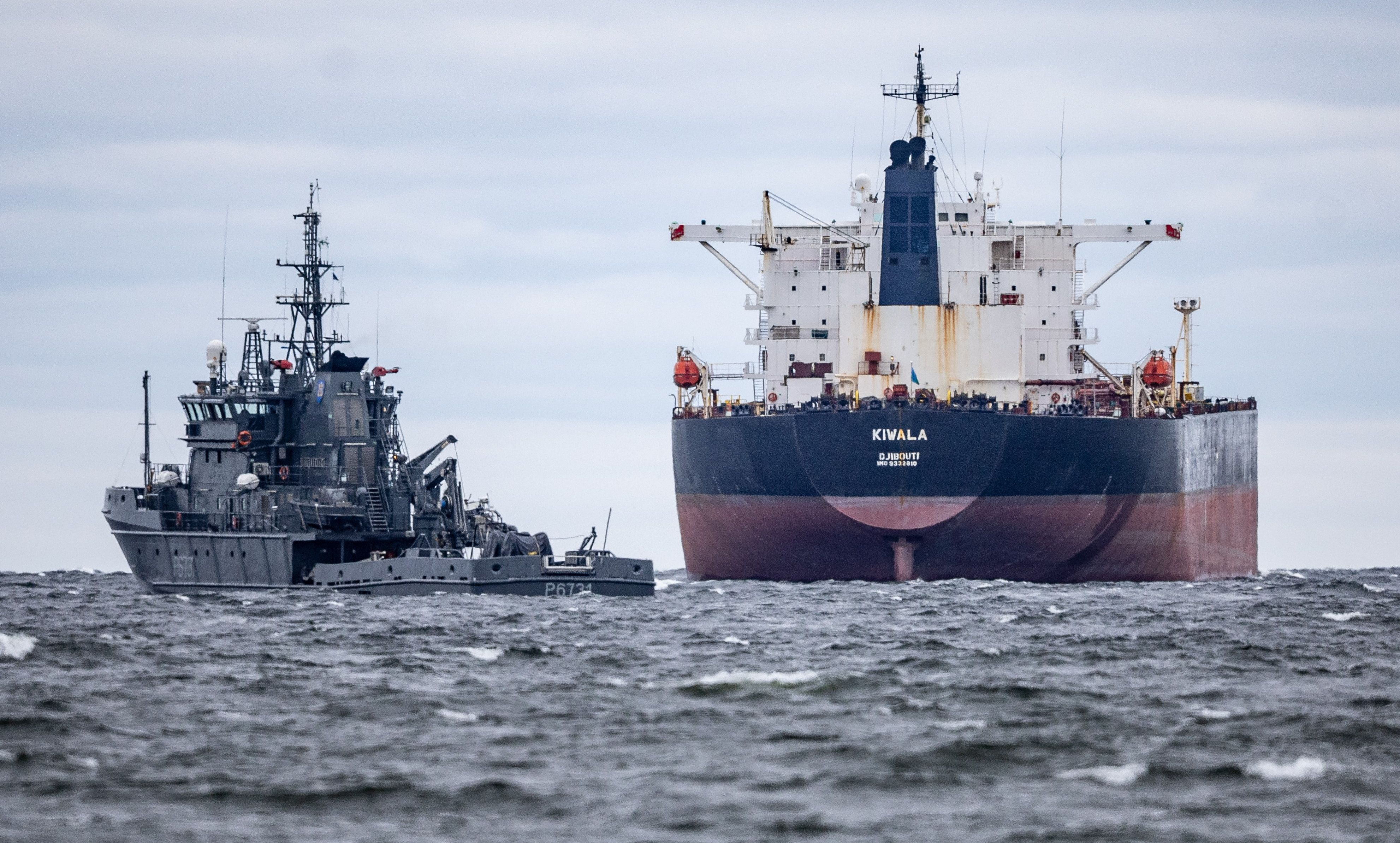The European Union’s latest moves (as part of its 17th package of sanctions against Russia declared in May) to target much more intensively Russia’s so-called “shadow fleet” of oil tankers and other vessels illustrate the danger that, as long as the Ukraine war continues, so will the risk of an incident that will draw NATO and the EU into a direct military clash with Russia.
The EU sanctions involve bans on access to the ports, national waters and maritime economic zones of EU states. Ships that enter these waters risk seizure and confiscation. It does not appear that Washington was consulted about this decision, despite the obvious risks to the U.S.
As part of this strategy, on May 15, an Estonian patrol boat attempted to stop and inspect a tanker in the Gulf of Finland. Russia sent up a fighter jet that flew over the Estonian vessel (allegedly briefly trespassing into Estonian waters), and the Estonians backed off — this time. In January, the German navy seized a Panamanian-flagged tanker, the Eventin, in the Baltic after its engines failed and it drifted into German territorial waters.
Sweden has now announced that starting on July 1 its navy will stop, inspect and potentially seize all suspect vessels transiting its exclusive economic zone, and is deploying the Swedish air force to back up this threat. Since the combined maritime economic zones of Sweden and the three Baltic states cover the whole of the central Baltic Sea, this amounts to a virtual threat to cut off all Russian trade exiting Russia via the Baltic — which would indeed be a very serious economic blow to Moscow.
It would also threaten to cut off Russia’s exclave of Kaliningrad, which is surrounded by Poland, from access to Russia by sea.
This is the kind of action that has traditionally led to war. The Swedish assumption seems to be that the Russian navy and air force in the Baltic are now so weak — and so surrounded by NATO territory — that there is nothing Moscow can do about this. However, it is very unlikely that the Swedes would take this step unless they also believe that in the event of a clash, Washington will come to Sweden’s defense — even though the EU and Swedish decisions were made without U.S. approval and are not strictly covered by NATO’s Article 5 commitment.
And despite all the hysterical language about Russia being “at war” with NATO countries, these moves by the EU and Sweden are also based on an assumption that Russia will not in fact lose its temper and react with military force. European policymakers might however want to think about a number of things: for example, what would the U.S. do if ships carrying U.S. cargo were intercepted by foreign warships? We know perfectly well that the U.S. would blow the warships concerned out of the water and declare that it had done so in defense of the sacred rule of free navigation — in which the EU also professes to believe.
EU leaders, and admirals, should also spend some time on Russian social media, and read the incessant attacks on the Putin administration by hardliners arguing precisely that Moscow has been far too soft and restrained in its response to Western provocations, and that this restraint has encouraged the West to escalate more and more. Such hardliners (especially within the security forces) are by far the greatest internal political threat that Putin faces.
It is important to note in this regard that moves to damage Russia’s “shadow fleet” have not been restricted to sanctions. In recent months there have been a string of attacks on such vessels in the Mediterranean with limpet mines and other explosive devices — developments that have been virtually ignored by Western media.
In December 2024, the Russian cargo ship Ursa Major sank off Libya after an explosion in which two crewmembers were killed. The Reuters headline reporting these attacks was rather characteristic: “Three tankers damaged by blasts in Mediterranean in the last month, causes unknown, sources say.” Unknown, really? Who do we think were the likely perpetrators? Laotian special forces? Martians? And what are European governments doing to investigate these causes?
If the Russians do sink a Swedish or Estonian warship, the Trump administration will face a terribly difficult decision on how to respond to a crisis that is not of its own choosing: intervene and risk a direct war with Russia, or stand aside and ensure a deep crisis with Europe. The U.S. administration would therefore be both wise and entirely within its rights to state publicly that it does not endorse and will not help to enforce this decision.
Washington also needs — finally — to pay attention to what the rest of the world thinks about all this. The overwhelming majority of senators who are proposing to impose 500% tariffs on any country that buys Russian energy have apparently not realized that one of the two biggest countries in this category is India — now universally regarded in Washington as a vital U.S. partner in Asia. And now America’s European allies are relying on U.S. support to seize ships providing that energy to India.
The U.S. administration would also be wise to warn European countries that if this strategy leads to maritime clashes with Russia, they will have to deal with the consequences themselves. Especially given the new risk of war with Iran, the last thing Washington needs now is a new flare-up of tension with Moscow necessitating major U.S. military deployments to Europe. And the last thing the world economy needs are moves likely to lead to a still greater surge in world energy prices.
European governments and establishments seem to have lost any ability to analyze the possible wider consequences of their actions. So — not for the first time — America will have to do their thinking for them.
















